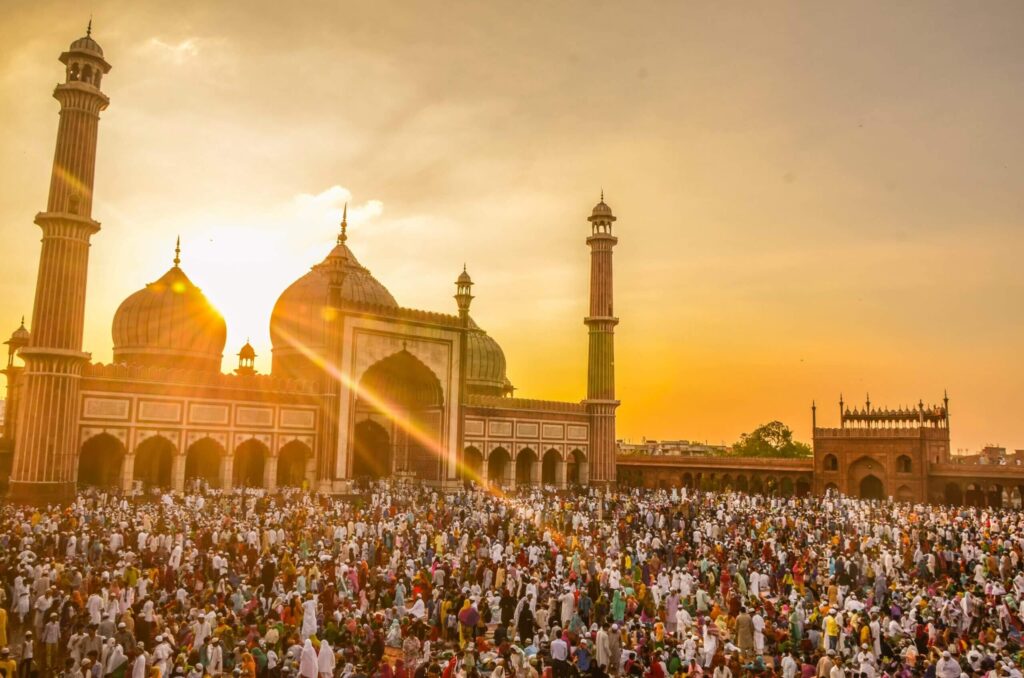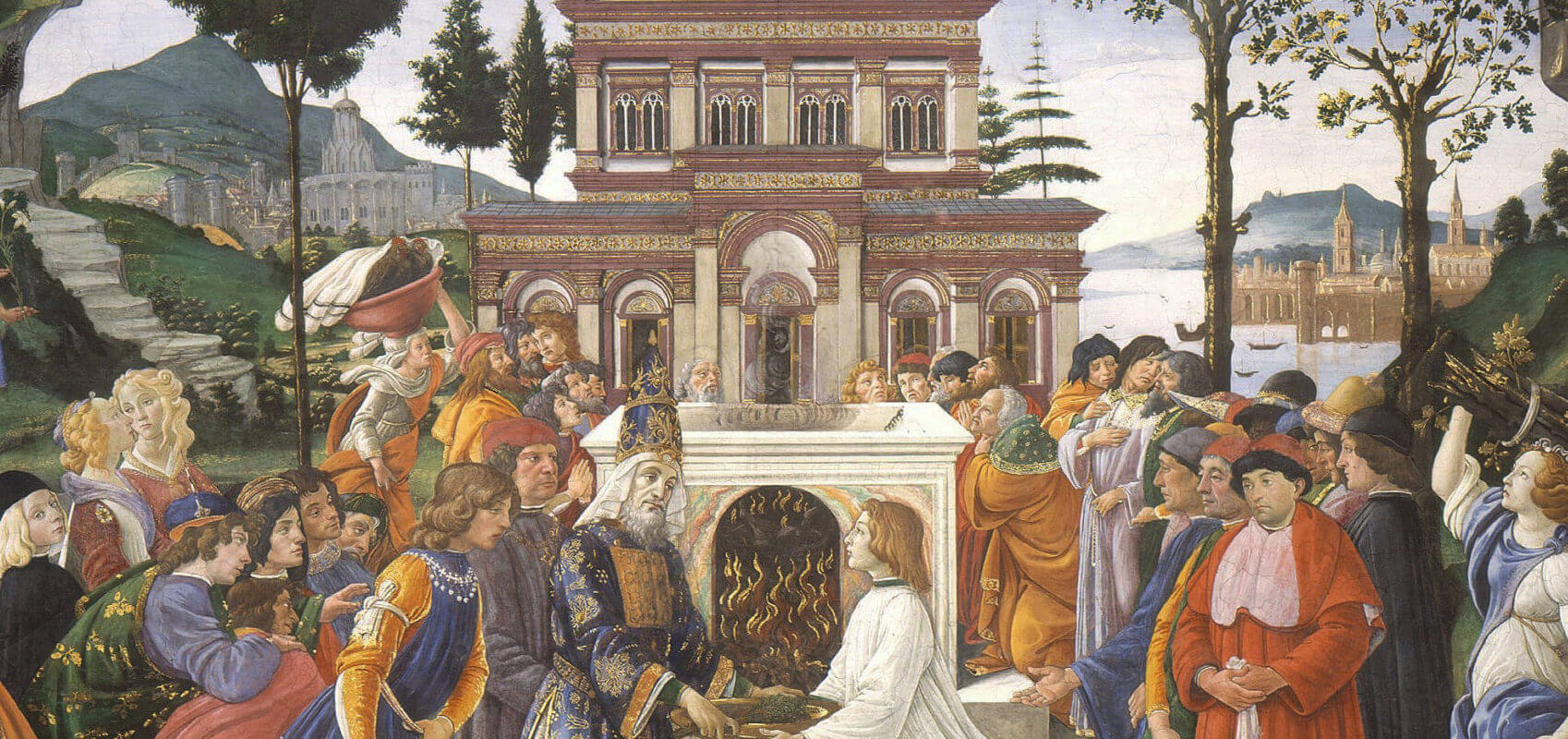Each time you go on a fast, you’re following a time-honored tradition that dates back to about 460 BC. There’s a reason that religions such as Taoism, Sikhism, Jainism, Islam, Hinduism, Lutheranism, Catholicism, and Buddhism all fast, as do everyday health-conscious people. Fasting leads to weight loss and could even extend your life. That has you curious, what is the history of fasting?
Fasting began with the Ancient Greeks, especially Hippocrates and Pythagoras. Later, fasting caught on with Muhammed, Buddha, and Jesus Christ. This led to the spread of fasting through religion and other means.
Ahead, we’ll discuss the history of fasting in greater detail, including its beginnings in Ancient Greece all the way to today. If you’ve ever wondered why we fast or who has fasted in history, you’re not going to want to miss this!
The History of Fasting
Ancient Greece
Greek culture is where fasting originates from. The Ancient Greeks used to consume water and no food during their fasts, which we know today is referred to as a water fast.
The reason that Greeks would fast was twofold, for both physical and spiritual benefits. According to Greek Medicine.net, when fasting spiritually, it was said that the Ancient Greeks could rise above their food attachments and addictions. The need to take care of one’s physical hunger would disappear (supposedly), allowing the Ancient Greeks to spend more time nourishing their spirits and their minds instead.
The physical benefits were internal detoxification, something that we recognize as a perk of fasting even today. The Ancient Greeks attributed many diseases of their day to autointoxication, which is defined as “poisoning by a toxin formed within the body itself.” Thus, by fasting, the body could detoxify itself and pause the digestive system so it could take a break.
If these benefits sound familiar to you these days, that’s because many of the perks of fasting have carried over into the 21st century. The Ancient Greeks believed so strongly in fasting for physical health that athletes about to compete in the Greek Olympic Games would fast as part of their training.

Several notable Ancient Greeks especially spearheaded fasting at the time. One of these is Pythagoras, born 570 BC and died 495 BC. Pythagoras was a philosopher and mathematician. He started Pythagoreanism sometime in the 6th century BC, a belief system that encapsulated all his teachings.
Without Pythagoras, we wouldn’t have Aristotle or Plato’s knowledge, as he inspired both of them and their personal philosophies. These philosophies would give way to Western philosophy, which formed and shaped the Western world.
In mathematics, Pythagoras created the Pythagorean theorem, which is still taught in many math classes today. He also identified Venus’ morning and evening stars and Earth’s sphericity as well as founding the Theory of Proportions, the five regular solids, and Pythagorean tuning.
Pythagoras would go on fasts of 40 days at a time for better creativity and mental perception. When he did eat, it was a vegetarian diet, as was the case for his followers, known as the Pythagoreans.
Hippocrates was another notable figure in Ancient Greek fasting. Born 460 BC and died 370 BC, Hippocrates lived in Classical Greece and was a physician. Some call him the Father of Medicine, a title that doesn’t come lightly.
Ancient Greek medicine came about due to the Hippocratic School of Medicine. Hippocrates is also credited with the Mediterranean diet, which is still followed in the 21st century. Under the Mediterranean diet, you consume some wine and non-fish meat, more yogurt, cheese, and other dairy, lots of fish, and even more vegetables, fruits, unrefined cereals, legumes, and olive oil.
This Harvard Health Letter from 2015 as well as countless other studies link the Mediterranean diet to a longer life, so Hippocrates was definitely on to something.
Hippocrates is said to have stated that “fasting is the greatest remedy – the physician within.” When he wasn’t on the Mediterranean diet, he fasted. Hippocrates is also credited as saying “the addition of food should be much rarer since it is often useful to completely take it away while the patient can withstand it, until the force of disease reaches its maturity. If the body is cleared the more you feed it the more it will be harmed. When a patient is fed too richly, the disease is fed as well…excess is against nature.”
Buddha and Fasting’s Spread to Buddhism
Fasting wasn’t only confined to Ancient Greece. Buddha or Siddhartha Gautama, an Ancient Indian religious leader, spiritual teacher, mediator, mendicant, and philosopher was another major figure in fasting. Born around 480 BCE and died in 400 BCE, Buddha fasted quite often, typically taking his fasts beyond a reasonably healthy limit. At one point, Buddha fasted for so long that he became emaciated, which is not something we’d recommend today or ever, really.
The Buddha Diet is a type of intermittent fast that, while named after Buddha himself, was created long, long after his time. The diet came into being in 2016. It’s a form of time-restricted eating or intermittent fasting. On the Buddha Diet, you spend your first two weeks eating only for 13 hours each day and reducing calories. Then, for the two weeks after that, you have an eating window of only 12 hours as you continue to reduce calories. Six weeks in on the Buddha Diet, you should only be eating for nine hours every day.
Back in Buddha’s time and beyond, his Buddhist monastics would review texts known as Vinayas and follow the fasting rules within. Buddhist fasting allowed you to eat in the morning, but once the clock struck noon, you could not eat for the rest of the day. Buddha believed this time in the afternoon was for sutra chanting and/or meditation.
It was a serious offense if someone following Buddhism happened to break this fasting rule. Buddha didn’t even consider this diet a fast, but rather, a means of bolstering health and meditative abilities.
Buddha also preached staying on the Middle Path, which means dodging both self-mortification and overindulgence. He suggested mindful eating for laypeople and his monastics alike, although he later walked back the rules for his monastics, who still had to cut off eating after noon. With mindful eating, it was possible to grasp where cravings come from and eat more slowly.

Buddha’s fasting rules gave rise to Theravada Buddhist monasticism’s ascetic practices such as dhutanga. This Indian term means to invigorate or shake up. Under this practice, followers would eat one meal a day, so think of this as an early OMAD diet.
The other school of thought was pindapata, where monks would beg all day for food, as they were only able to consume what they collected in their bowls when the day was over. On bad days when the monks weren’t given much or anything at all, they fasted. Even if their bowls were full, a single bowl of food a day could be considered its own type of fasting.
Tibetan Buddhism also has its own rules on fasting. There, they follow nyungne, a Vajrayana practice that comes from a Chenrezig outer tantra practice. Chenrezig, also known as Padmapani or Avalokitesvara is a compassionate bodhisattva.
Through nyungne, on the first day, Buddhist followers would consume vegetarian food only, then, on the second day, avoid both water and food, continuing the fast from there.
In Seon Buddhism in Korea, fasting and meditation go hand in hand, especially during geumchok training. Shingon and Tendai, two sects of Japanese Buddhism, follow weeklong fasts known as danjiki to become a master teacher or acharya. In. Tendai school especially, these fasts sometimes go on even longer than a week, such as nine days at a time.
Chinese Buddhists believe in the eight-fold fast or baguan zhai. This form of fasting was strictly followed over the Han dynasty, the second Chinese imperial dynasty. When on a fast of this nature, the eating window ends at noon. Fasts might last for three or six days. During eating windows, fish has to be avoided.
The changzhai was a much longer fast in Chinese Buddhism that was followed every January, May, and November for the first half of each month. Emperor Ming from the Liu Song dynasty believed in fasting and was also a vegetarian, and it’s believed changzhai stayed popular at least partially in deference to him.
Jesus Christ and Fasting’s Spread to Greek Orthodox Christianity
Another major religious figure outside of Buddha who fasted was Jesus Christ, born 4 BC and died around 30 or 33 AD.
According to the Temptation of Christ, which is included in the Gospels of Luke, Mark, and Matthew, Jesus first received baptism from John the Baptist. Then, over 40 days spent in the Judean Desert, Satan unsuccessfully sought to tempt Jesus.
When this failed, Satan left, so Jesus went to Galilee and began a ministry. It’s believed that even when warding off Satan, Jesus fasted. Yes, for 40 days at a time.
The United Church of God says Jesus fasted during the Temptation of Christ to seek God’s assistance. At the time, Satan tried to lure Jesus into eating, telling Jesus that he could make stones into bread. However, Jesus resisted, speaking a line from Deuteronomy 8:3: “Man shall not live by bread alone, but by every word that proceeds from the mouth of God.”
Not only did Jesus resist food during the Temptation of Christ, but water as well, insisting he used God as nourishment and strength during this difficult trial.
Unlike the followers of other religious figures, Jesus’ disciples didn’t fast. Jesus was even asked about this one day, but he noted how his disciples would begin fasting after he died.
Although it’s not clear how often Jesus fasted outside of the written documentation in the Temptation of Christ, the United Church of God says it was often. For those who follow Greek Orthodox Christianity and other forms of Christianity, fasting is a way to feel closer to God and draw strength.
Christians will also fast seasonally based on the liturgical calendar. They may go on a fast ahead of taking Holy Communion as well, which is known as a Eucharistic Fast.
Lent or Lenten in Western Christianity is also followed by the Western Orthodox Church, Anglican Communion, Reformed Churches, Methodist Churches, Lutheran Churches, and the Catholic Church.
During Lent, which lasts for 40 days, Christian followers must go on a partial fast. The duration of this fast is as long as the Temptation of Christ by design, but eating and drinking are allowed in part, unlike what Jesus endured. Besides partial fasting, Lent calls for temporarily quitting a luxury for 40 days to honor Jesus’ sacrifice during the Temptation of Christ.
The Black Fast in Christianity is a traditional fast with strict rules. You cannot eat during the day and must wait until sunset to consume food. Some follow the Black Fast for Lent, or 40 days, while others do it on Good Friday and Ash Wednesday only.

The 19th and 20th Centuries
According to Target Health, fasting had some dark proponents as society entered the 19th and 20th centuries. By this time, fasting was pretty well-understood and followed by many. Some figures were exploitative of fasting, which sometimes led to innocent deaths.
Take, for instance, Linda Burfield Hazzard from Minnesota, born in 1867 and died in 1938. She was called the Starvation Doctor because when her patients went to her for medical advice, she recommended many of them go on a fast. They would be fed moderate amounts of food at first, then less and less until they died. Some of her patients were only 50 pounds when they died, and these were grown adults.
Luckily, Hazzard was arrested and faced jailtime for her crimes, but she did later get out of prison and lived most of the rest of her life in New Zealand. She died doing one of her own fasts.
The 19th century was also when other fasting practices came to light, such as therapeutic fasting. Dr. Herbert Shelton, born in 1895 and died in 1985, led the Natural Hygiene Movement that relied on therapeutic fasting. This form of fasting was believed to be effective for treating poor health and involved a doctor’s supervision.
Dr. Shelton advocated for water fasts and may have assisted more than 40,000 patients after starting Dr. Shelton’s Health School in Texas. He could have run for President of the United States in 1956, as the American Vegetarian Party wanted him to enter the race.
Although Dr. Shelton’s ideas have since been discounted, he was impactful for the time.
Modern Day Fasting
That brings us to today, the 21st century. Luckily, thanks to the advent of the Internet and doctors with far greater medical training than some of the ones described in the last section, intermittent or longer-term fasting has become a safe, viable option for almost anyone today.
Intermittent fasting, which includes alternate-day fasts, 16:8 fasts, water fasts, 12:12 fasts, dry fasts, and the OMAD diet, can be a healthy, reliable way to lose weight. During an intermittent fast, it’s also possible to kickstart autophagy, burn fat, and bolster the immune system.
People can fast with their doctor’s supervision if they feel more comfortable, or they can go on a fast on their own at home. Resources like this blog as well as scientific and health sites explain everything a person needs to know to safely fast, something that people didn’t have in the 19th century.
There will unfortunately always be scammers like Linda Burfield Hazzard trying to hop on a bandwagon. Today though, the average consumer is so well-informed that they can quickly sniff out someone who seems less than genuine.
Considering how long fasting has been a part of everyday health, we wouldn’t say it’s going anywhere anytime soon. Some of the benefits of fasting, such as a chance for the digestive system to repair itself, greater mental clarity, and resetting one’s system date back to Ancient Greek times, proving how fasting has led to generations of better health.
Conclusion
The recorded history of fasting begins with the Ancient Greeks and continues with modern humankind in the 21st century. Popular figures such as Hippocrates, Pythagoras, Buddha, and Jesus were all proponents of fasting, and they inspired religions with thousands if not millions of people to do the same.
That’s a good thing, as the earliest recorded benefits of fasting are still those that we enjoy today. This just proves that fasting was always good for people and should continue to be for the rest of the 21st century and beyond.
Other artiles:
Sleep Study Melbourne: What to Expect & How to Prepare
Sleep Testing Sydney: Complete Guide to Better Sleep Health



